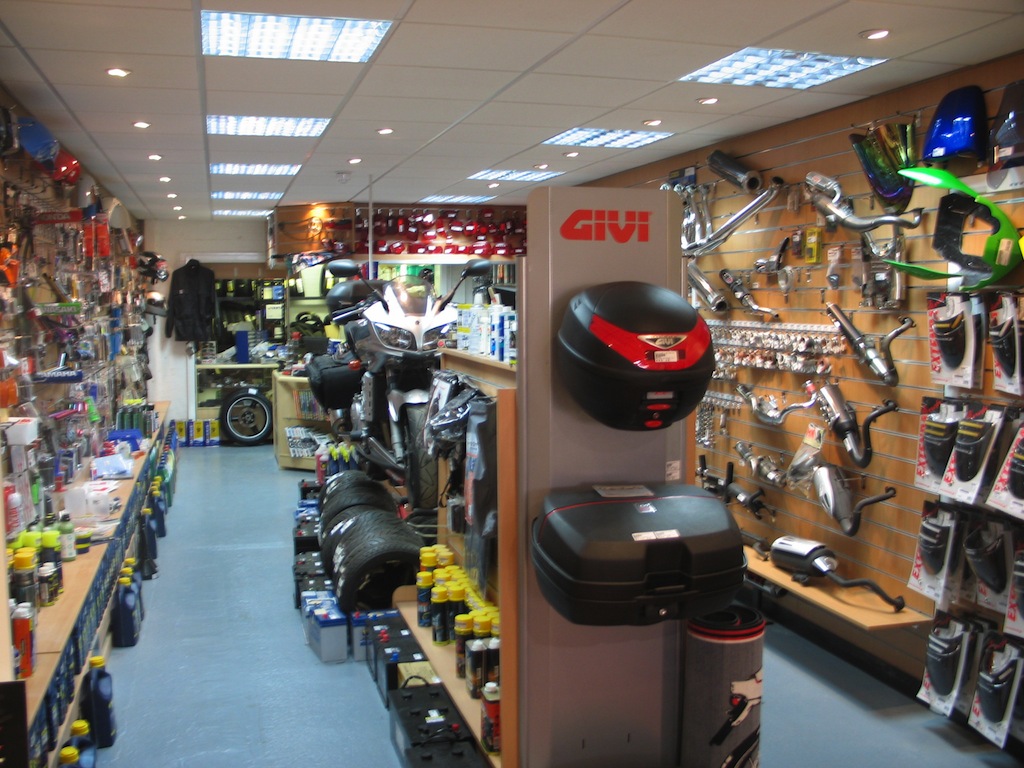Explore the current Motocross Gear NZ for every single Degree of Rider
Explore the current Motocross Gear NZ for every single Degree of Rider
Blog Article
Understanding the Crucial Parts of a Motorbike: A Comprehensive Guide for Enthusiasts
For motorbike fanatics looking to elevate their riding experience and guarantee their bikes run efficiently, understanding the vital elements of a motorbike is paramount. Each aspect, from the engine's detailed functions to the critical duty of the braking devices, not only influences performance yet also safety and comfort. This guide will go through the basic parts that every rider must know with, making it possible for informed choices in both maintenance and potential upgrades. As we begin this exploration, one must ask: exactly how does each element engage to develop the smooth ride every fanatic seeks?
Engine Components

The camshaft plays an important role in controlling the timing of the engine's valves, making sure the accurate opening and closing necessary for reliable gas and air consumption, in addition to exhaust expulsion. This timing is vital to maintaining ideal engine efficiency and performance. Additionally, the carburetor or gas shot system, relying on the motorcycle version, is in charge of blending air with fuel in the proper proportion for burning.
The air conditioning system, either air or liquid-based, functions to keep the engine's temperature within operational limits, avoiding overheating and making certain longevity - mx gear nz. Each component, thoroughly developed and incorporated, adds to the seamless operation of the engine, defining the motorcycle's power outcome and general efficiency
Transmission System
Integral to the bike's performance, the transmission system makes sure efficient power transfer from the engine to the wheels. This system makes up several important elements, consisting of the clutch, transmission, and last drive, each playing a crucial role in equating the engine's power right into motion. The clutch, normally run by a hand lever, serves to engage and disengage the engine from the transmission, allowing for smooth equipment adjustments and regulated velocity.
The transmission, often described as the transmission appropriate, includes a collection of gears that cyclists can by hand change through to readjust the bike's speed and torque output. These gears are prepared in a sequence that enables the motorcycle to increase smoothly and keep ideal engine performance throughout numerous speeds. Most bikes use a sequential gearbox, needing the cyclist to shift gears in a fixed order.
Braking Systems
While understanding the transmission system is vital to utilizing a motorcycle's power, equally important is the capacity to control and quit that power efficiently, which is where braking devices enter play. Brakes are crucial for safety and efficiency, offering the motorcyclist with the needed control to browse various terrains and problems. Normally, bikes include two types of stopping systems: disc brakes and drum brakes.
Disc brakes are much more common in modern-day motorbikes due to their exceptional efficiency. This system supplies far better heat dissipation, regular performance, and enhanced stopping power, especially in wet problems.
On the other hand, drum brakes, though less common, are still discovered in some bikes. They function by pressing brake footwear versus the inner surface area of a drum affixed to the wheel. While usually less effective in warmth dissipation and quiting power, drum brakes are easier and much more affordable.
Recognizing these braking systems' subtleties permits cyclists to keep their bikes properly and appreciate the design that ensures effective and secure quiting.
Suspension and Guiding
Suspension and steering systems are crucial components that dramatically affect a motorcycle's handling and ride convenience. The suspension system, containing forks at the front and shock absorbers at the back, takes in road abnormalities, enhancing security and control. Front forks, inverted or normally telescopic, compress and rebound to reduce effects, while rear shock absorbers maintain tire contact with important site the roadway, critical for grip and safety.
Steering, focused around the handlebars, attaches the rider to the bike's directional control. The steering head bearings ensure smooth operation, enabling specific maneuverability. Proper positioning and upkeep of these bearings are critical for predictable steering reaction and minimizing rider tiredness.
The suspension's adjustability is another important aspect; preload, damping, and rebound settings permit personalization to match numerous riding designs and conditions. This versatility is vital for enhancing efficiency, whether browsing urban roads or dealing with tough trails. Technologies like electronic suspension systems offer real-time changes, enhancing adventure high quality throughout varied surfaces.

Electric Systems
After guaranteeing a smooth and regulated ride through reliable suspension and guiding systems, focus turns to the electrical systems, an essential aspect of modern motorcycles. These systems play a critical function not only in starting the engine but also in powering numerous elements that enhance the functionality and safety and security of the motorbike.
At the heart of a motorbike's electric system is the battery, which stores electric power needed for starting the engine and powering complementary systems - motocross gear nz. The alternator or generator, combined with the rectifier-regulator, makes certain the battery remains billed while the bike is in operation, converting power into electric power and keeping voltage levels
The ignition system, another critical component, is accountable for sparking the air-fuel blend in the engine's cylinders. Modern bikes often make use of a digital ignition system, using higher efficiency and dependability contrasted to traditional systems.
Lighting systems, including headlights, tail lights, and indications, are also crucial, ensuring visibility and security for the biker. Added electronic elements such as sensors, control systems, and presents add to advanced features like gas shot management, anti-lock braking systems (ABDOMINAL MUSCLE), and digital control panels, even more improving the riding experience.
Verdict
A detailed comprehension of a motorcycle's crucial elements, including the engine, transmission system, stopping mechanisms, suspension, steering, and electric systems, is important for enthusiasts aiming to maximize convenience, efficiency, and security. Proficiency of these components enables notified decisions concerning maintenance and upgrades, ultimately enhancing the riding experience. By incorporating this expertise, cyclists can guarantee their bikes run at peak effectiveness and integrity, thus maximizing both pleasure and long life of their vehicles.
For bike lovers looking to raise their riding experience and guarantee their bikes run smoothly, comprehending the important components of a motorcycle is extremely important.Essential to the motorbike's functionality, the transmission system ensures effective power transfer from the browse around here engine to the wheels.While understanding the transmission system is essential to harnessing a bike's power, just as essential is the ability to regulate and stop that power properly, which is where stopping devices come right into play. Normally, motorbikes feature two types of stopping systems: disc Bonuses brakes and drum brakes.
A thorough comprehension of a motorbike's crucial parts, consisting of the engine, transmission system, stopping systems, suspension, steering, and electrical systems, is essential for fanatics intending to enhance performance, security, and convenience.
Report this page